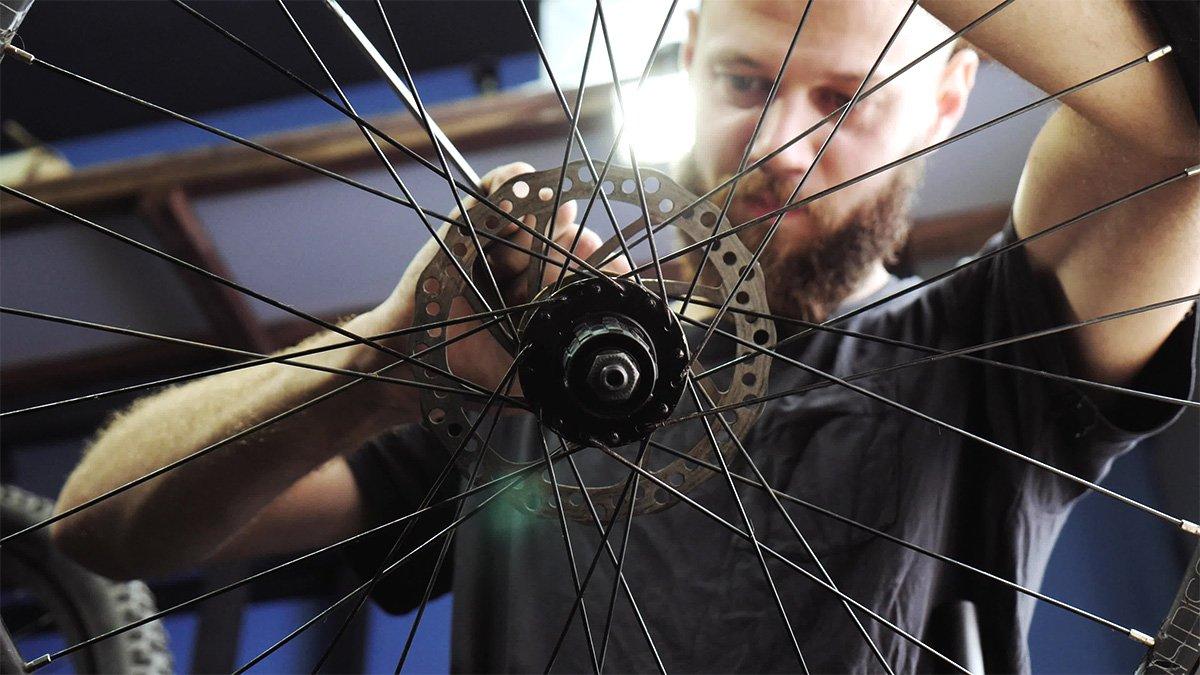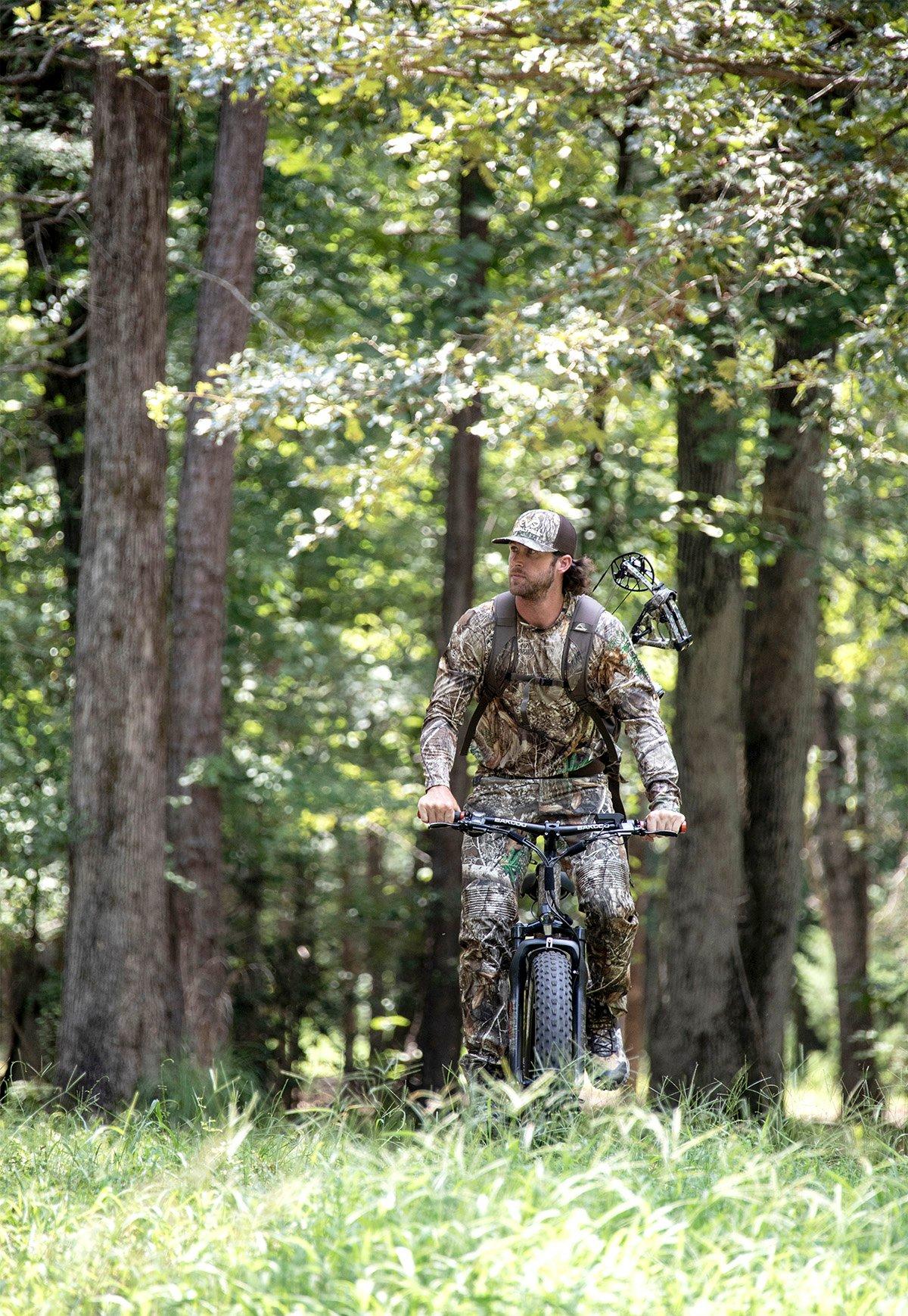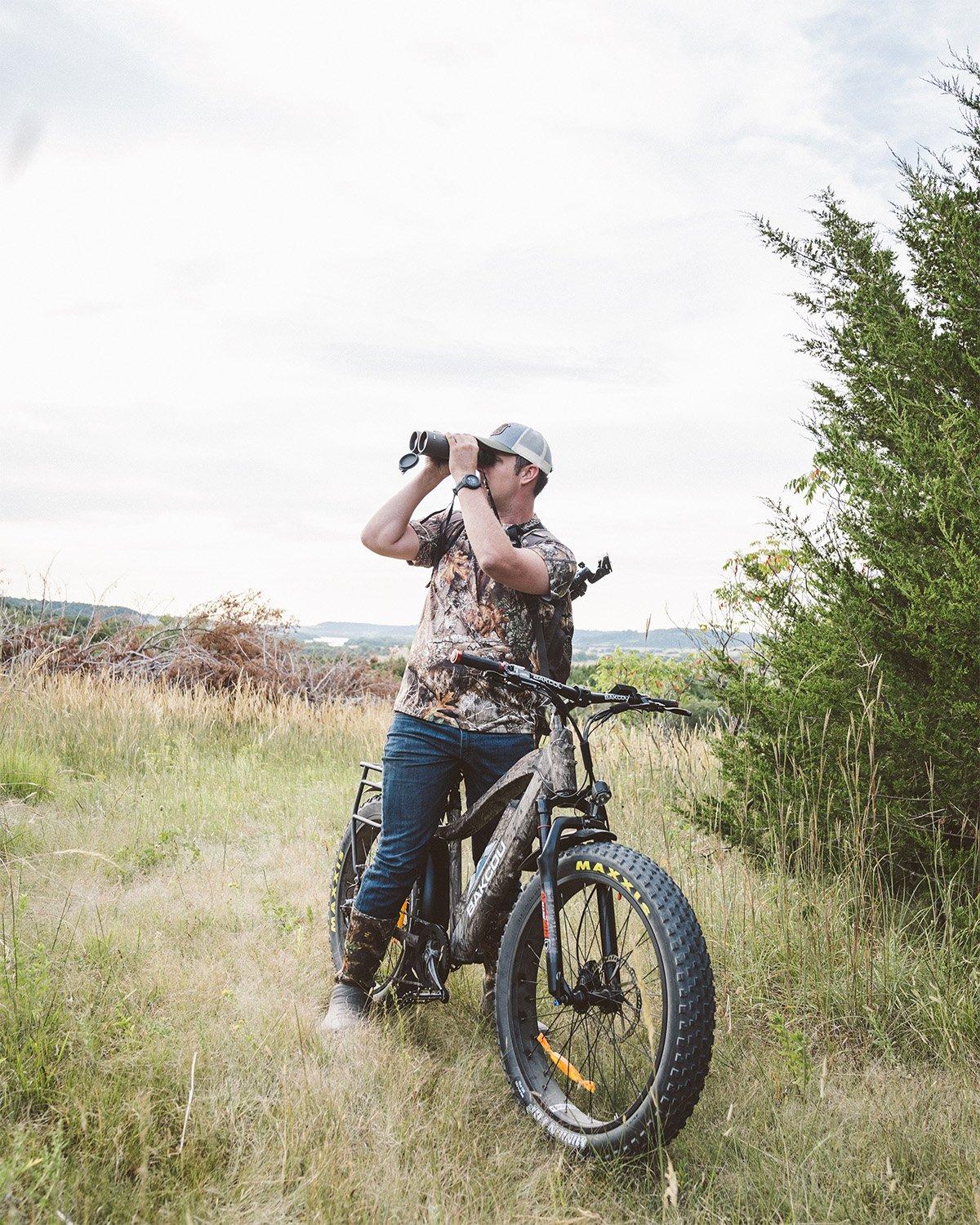Stealth moves for spring gobblers on two wheels
You silently move along a skinny game trail through the woods toward birds you roosted last night on the same bike. You hide your rig inside a natural blind. Confidently you sit, take a breath, raise your camo facemask, and settle in — certain you'll feel no pressure from other hunters.
And hear only birds. Game on, a gobbler breaks the silence …
Sure, your pickup truck or four-wheeler can get you where you want to go on a turkey hunt. Problem is, some gobblers sense this noisy and predictable pressure along access roads, especially if a lot of people are doing it on public land.
Sometimes it pays to use a two-wheeled approach.
An old-school mountain bike — and even a modern e-bike — will put you where you want to be. Two quiet wheels allow you to cover more ground in relative silence, and in faster time than on two legs.
Before the Hunt
It can be easy to dodge necessary maintenance measures when the call of a wild turkey has you obsessed.
But before you take to the woods, check your wheels for loose spokes, brake operation, and tire pressure.
Use light oil or lube on your chain or derailleur wheels. Oil your brake calipers and levers as well. For maximum performance, apply a lithium-based grease to your shift levers and brake cables.
Consider taking your bike to a local shop for a flat-rate tuneup. Have them inspect the seat pillar, headset, wheel bearings, derailleur cables, pedals, and bottom bracket, applying grease to these parts.
This way, you will have even more confidence pedaling your way to turkey hunt.
Pressure Points
A poker player with the game's best hand is much like a pressured longbeard — especially a shut-mouthed bird. Early and midseason, biking offers a different way to approach that tough gobbler holding all the cards.
Biking along silently, use locator calls with discretion to pull shock gobbles from birds. Owl hoot before daybreak or at dawn, crow call after turkeys are on the ground, or simply yelp like a hen — but be ready to hide fast if a gobbler booms back at you, out of sight but nearby.
Biking to birds is a nice leisurely way to find turkeys to hunt. You can often leave other hunters in their trucks back on the main road. Big undeveloped woods are perfect for this.
Hunt heavy timber for Eastern wild turkeys. Tool along white sand trails through Osceola ranches, open prairies out West where Merriam's ramble, or big expanses where Rios strut.
Later in the season, if pressured gobblers are alone as hens begin to nest, you can try your luck where flocked-up turkeys gave you trouble early on. Biking can help you slip back in there.
Is It Legal?
Biking, however, in some of our nation's wilderness areas is illegal.
Mountain biking emerged as a new recreational activity in the late 1970s. In 1984, the U.S. Forest Service defined mountain bikes as mechanical transport.
As a result, always check for specific local, state, regional, and federal regulations for any area where you'd like to bike to hunt.
Tips and Tricks
Consider some of these field-tested moves to bike better to your turkeys.
- Get to know your bike before the hunt — its general riding potential, gear shifting, and braking mechanisms. Almost any trailworthy bike will do, but it helps if your two-wheeler has been field-tested.
- Carry your bike in the bed of your truck. Haul it to your hunting spot, then deploy. Your two wheels can cover the rest of the way.
- Always remember where you stash your bike in the woods. Stay close, or ride to the next bird.
- A bike lock can safely wrap around a tree and secure it in areas where you feel the need.
- For biking to birds, consider a lighter vest, one with a drop-down seat cushion and a big game pouch. Carry just a few calls and a handful of turkey loads. You need room for biking gear such as tube sealant for flats and a chain breaker plus extra links for repairs.
- When slipping along two-tracks or game trails in spring turkey country, you'll likely get out early, before fly-down time. Some bikes have attachment lights for navigating dark access points, or you can ride with a flashlight clipped to your cap bill.
- Always bike with an unloaded shotgun. Archery tackle, sure, if you can carry it along safely.
- When stopping, apply the rear brake first, then the front. Reversing this may cause you to lose control in the woods, as the front option is often stronger.
- Avoid wet patches in trails, which might be deeper than you think. Bumps or dangerous drop-offs can spell trouble.
- Tuck your pant legs into your boots to keep loose material from getting caught in the chain. You may need to stop a time or two to adjust gear carries, sure.
- And, as the saying goes, expect the unexpected.
Deal Closer
Your bike is hidden. The longbeard silhouetted in the big oak in front of you is fired up and no hens are answering back. Just you and the gobbler now. Perfect.
Wing tips tick branches and the bird is on the ground. You cluck, then run a series of soft yelps. The turkey gobbles hard. Sprints to the edge of range. Pops into strut, then slowly minces steps in. Steady now. Enjoy the moment. Take the shot.
That extra 20 pounds in your vest's game pouch feels great. And heck, the weight provides some good ballast as you wheel and twist your way out of the woods.
What makes Realtree.com the best online resource for turkey hunters? See for yourself. We cover all things turkey right here.










